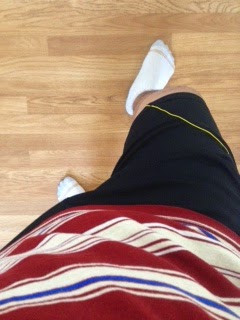Looking back at the last post you can see that I posted a picture about how to draw manga eyes.I decided not to do any posts on drawing of the mouth or the hair because they did not give a in depth of how to draw them.So now I will just show you how to put it all together and how to draw the face and how to put the eyes, nose,lips, hair and many more together into a manga anime girl. I hope some of you now that I will be focusing more on drawing the girls rather then the guys;with the book it allowed me to draw a face better and know the steps on where to put all the anime features at.
As you are deciding on how to draw a girl's head shape keep in mind what Camilla D'errico says " Always remember that girls have rounder faces, and the lines of their features are always softer and curvier"(34.) As you are starting out on the face shape "Start with an oval and crosshairs; drawing eyes on the horizontal line and eyes brows above. Draw a little line to indicate the nostrils, then add a mouth halfway between the nostril and the chin. To complete it draw little vertical lines for the ears (Camilla D'errico 34).
Next step is to "Shape the head a bit by making the sides a little straighter; and by creating a jawline." (Camilla D'errico 34). You are basically now staring to face out the shape a little better, you would then make little half-ovals for the ears and the ears should be barley noticed (Camilla D'errico 34).
Adding onto the next step you are still defining the face you would then add two small dots for the nose and also draw the neck line, as you are drawing the neck line Camilla D'errico says "A female character's neck is slimmer than a guy's so curve the neck lines inward" (34.)
This time you are starting to define the eyes and eyebrows a little further( Go back to my last blog post if you don't remember how to draw the eyes in) In this stage Camilla recommends that you start " Begin sketching in the hairline" (35). Of course start sketching out how you want the girls hair to be.
We are now moving on the defining the hair and Camilla likes to point out that you should start defining the " basic shape and texture of the hair and don't worry if you don't get it quite right and that you'll be able to refine it later on" (35.)
Dosen't seem like this is a lot of steps and a lot of work? yes it may seem like it but, in the end it will all be worth it now continuing you are going to change to a darker pen and "start out with the eyes, defining their shape, then moving onto the nose, mouth and eyebrows. Don't be afraid to make adjustments." as what Camilla D'errico says (35).
Now we are at the last two steps! In these lap two steps you would like to " Fill in the rest of the face, shading the eyes and adding details to the hair." (Camilla D'errico 35). As you start to finish up the face erase the blue lines and now you have a cute manga girl face presto and finish! (Camilla D'errico 35).
A question I have for you guys is that if you guys were about to draw a manga drawing how would you like them to be? What features would you like them to have on their face? what gender would they be? and mostly for the Anime lovers what anime would you want them to be on?
Citations: D'Errico, Camilla, and Stephen W. Martin.
Pop Manga: How to Draw the Coolest, Cutest Characters, Animals, Mascots, and More. First ed. New York: D'Errico Studios Ltd and Stephen W.martin, 2013. Print.





























.JPG)

















